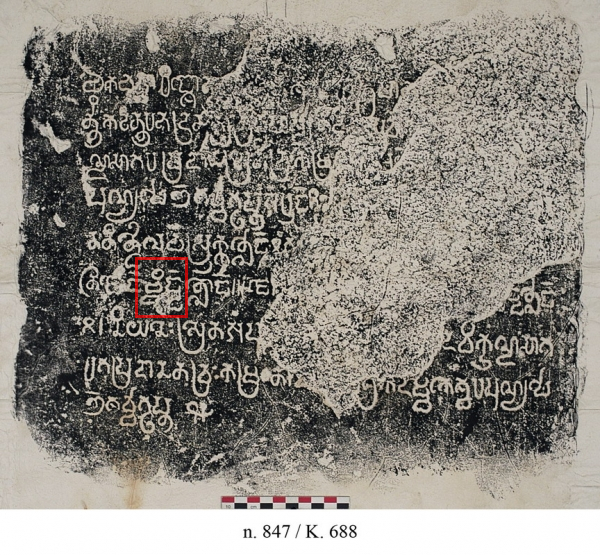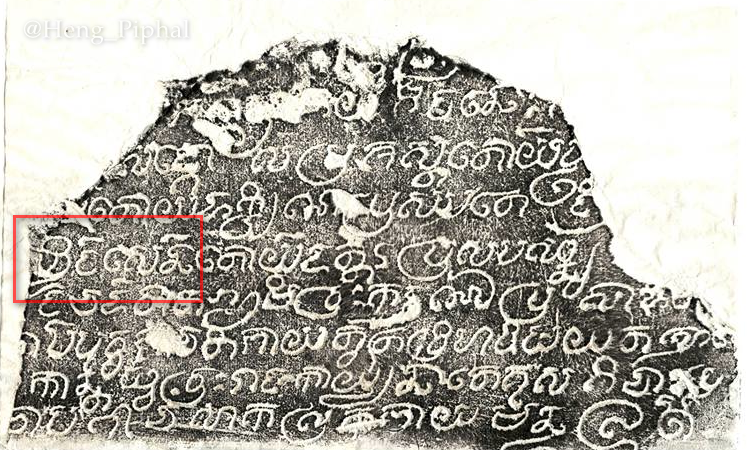ជាធម្មជាតិ ភាសាតែងមានការប្រែប្រួលជានិច្ច។ ដោយសង្កេតជាធម្មតា ក៏យើងនឹងឃើញថាជនជាតិខ្មែររស់នៅតំបន់ផ្សេងៗគ្នា មានការប្រើប្រាស់ពាក្យពេជន៍ខុសប្លែកគ្នាមួយចំនួនដែរ។ ក្រៅពីពាក្យ ការបញ្ចេញសូរសំឡេង ក៏មានការខុសប្លែកគ្នាដោយអន្លើផង។ អ្នកដែលរស់នៅតំបន់ផ្សេងៗក្នុងស្រុកខ្មែរ នឹងអាចកត់សម្គាល់ភ្លាមឃើញថាពាក្យដែលជាទូទៅគេបញ្ចេញសំឡេងអក្សរ «ស» អ្នកស្រុកមួយប៉ែកនៃខេត្តតាកែវ និងអ្នកខេត្តកំពត បញ្ចេញសំឡេងជាអក្សរ «ច» ឬ «ឆ» ទៅវិញ។ ក្នុងអត្ថបទនេះ យើងនឹងបង្ហាញអំពីពាក្យដែលមានបម្រែបម្រួលពីអក្សរ «ច» ទៅ «ឆ» និងទៅជា «ស» ដែលមានតាំងពីសម័យមុនអង្គរមក។
យើងគួររំលឹកបន្ដិចដែលថា ភូមិភាគខាងត្បូងនៃប្រទេសកម្ពុជា ជាពិសេសខេត្តតាកែវនិងកំពត ជាតំបន់សំខាន់នាសម័យមុនអង្គរ។ នៅខេត្តកំពតមានប្រាសាទសំខាន់ៗនាសម័យមុនអង្គរដូចជាប្រាសាទភ្នំទទុង ប្រាសាទភ្នំខ្យង និងប្រាសាទភ្នំឈ្ងោក។ ក្រៅពីនេះ យើងក៏ឃើញមានទួលប្រាសាទឬទួលអង្គសម័យមុនអង្គរជាច្រើន និងសិលាចារឹកសម័យមុនអង្គរមួយចំនួនដែលរកឃើញនៅខេត្តកំពតដូចជា៖ សិលាចារឹកគុហាហ្លួង K.៤៤ សិលាចារឹកប្រាសាទភ្នំឈ្ងោក K.៤៦ សិលាចារឹកត្រពាំងធំ K.៤២៣ និងសិលាចារឹកទួលអង្គជីឆ្មារ K.១៣៥២ ជាដើម។ ដូច្នេះហើយ ទើបយើងឃើញមានពាក្យខ្លះដែលអ្នកតាកែវ និងកំពតបញ្ចេញសំឡេង ទំនងជារក្សាសូរភាសាដែលបន្សល់មកតាំងពីសម័យមុនអង្គរ។
ពាក្យដែលយើងយកមកពិនិត្យដំបូងគេ គឺពាក្យដែលមានសំណេរជា «ច្ទិង៑» និង «ច្ទិង្ង»។ ពាក្យនេះ គេតែងប្រទះឃើញជាទូទៅក្នុងសិលាចារឹកសម័យមុនអង្គរ ដូចមានក្នុងសិលាចារឹកគុហាហ្លួង K.៤៤ ជាដើម។ ពាក្យនេះក្លាយមកជាពាក្យ «ស្ទឹង» នាពេលបច្ចុប្បន្ន។ នៅសម័យអង្គរ ពាក្យនេះមានការប្រែប្រួលសំណេរជា «ឆ្ទិង៑» និង «ឆ្ទិង្ង»។ ដូច្នេះយើងសង្កេតឃើញថា នៅពេលមានការផ្លាស់ប្ដូររាជធានីពីភាគខាងត្បូងប្រទេសកម្ពុជា មកតាំងទីនៅប៉ែកខាងជើងបឹងទន្លេសាបវិញ ភាសាក៏មានការប្រែប្រួលដែរ គឺទាំងការប្រែប្រួលសូរព្យញ្ជនៈ និងពាក្យពេជន៍។ នៅក្នុងសម័យកណ្ដាល យើងពុំទាន់ជួបប្រទះសិលាចារឹកដែលមានពាក្យ «ស្ទឹង» នៅឡើយទេ។
ពាក្យមួយទៀតគឺពាក្យ «សម្លៀក» បច្ចុប្បន្ន ដែលមានសំណេរជា «ចន្ល្យក៑ ចន្ល្យាក៑ ចន្ល្យាក្ក» នៅសម័យអង្គរ និង «ចន្លេក៑ ចំន្លេក៑» នៅសម័យមុនអង្គរ។ ដូច្នេះយើងឃើញថា ពាក្យដែលមានសូរព្យញ្ជនៈ «ស» ដែលអ្នកតាកែវ-កំពតបញ្ចេញសំឡេងជាព្យញ្ជនៈ «ច/ឆ» វិញនោះ គឺមានលក្ខណៈចាស់បុរាណ ដែលមានភស្ដុតាងបញ្ជាក់តាមសិលាចារឹក តាំងពីសម័យមុនអង្គរមកម្ល៉េះ។ ខាងក្រោមនេះ ជាសម្រង់ពាក្យដែលមានការប្រែប្រួលពី «ច» ទៅ «ឆ» និងទៅជា «ស» តាំងពីសម័យមុនអង្គរមក ដោយផ្នែកតាមទិន្នន័យសិលាចារឹក៖
————————————————-
Pronunciation from consonant “C” to “S”
Naturally, language is always changing. Based on observation, we will also see that Khmer people living in different areas, there are some different use of words. Apart from words, pronunciation is also dissimilar. People living in different parts of Cambodia will immediately notice that the word is usually pronounced with the consonant “S”, but a part of the people of Takeo province and Kampot province pronounce the consonant “C” or “CH” instead. In this article, we will indicate the words that change from the consonant “C” to “CH” to “S” that existed Pre-Angkorian period.
We should remind that the southern part of Cambodia, especially Takeo and Kampot provinces, were important pre-Angkorian period. In Kampot, there are important pre-Angkorian temples such as Phnom Totong, Phnom Khyang, and Phnom Chhngok. In addition, we also see many foundations of pre-Angkorian temple or foundations some of the pre-Angkorian temples and among of inscriptions in pre-Angkorian found in Kampot, such as Guhea Hluong Inscription K.44, Inscription of Phnom Chhngok Temple K.46, Trapeang Thom Inscription K.423 and Tuol Ang Jichmar Inscription K.1352, and so on. Therefore, we only see some words that the people of Takeo and Kampot pronounce seem to preserve the language remaining from the pre-Angkorian period.
The words we first examine are the words that are written as “Cdiṅ” and “cdiṅṅ”. The word is commonly found in pre-Angkorian inscriptions, such as in the Guhea Hluong Inscription K.44. This word became the word “Sdiṅ” (Lake) today. In the Angkorian period, this word was changed to “Chdiṅ” and “Chdiṅṅ”. Thus, we observe that when the capital is moved from the south of Cambodia to the northern part of the Tonle Sap Lake, the language also changes both pronunciations consonant and word. In the Middle period, we have not yet seen an inscription containing the word “Sdiṅ”
Another word is “Smlīek” which is spelled today as “Canjhak, Canjhāk, Canjhākk ” in the Angkorian period and “Canlek, Caṃnlek” in the pre-Angkorian period. Therefore, we see that the word with the letter “S” that the people of Takeo-Kampot pronounce as the consonant “C / CH” is an ancient figure which has been illustrated on inscriptions from the pre-Angkorian period.
អត្ថបទដើម៖ លោក ហ៊ុន ឈុនតេង








